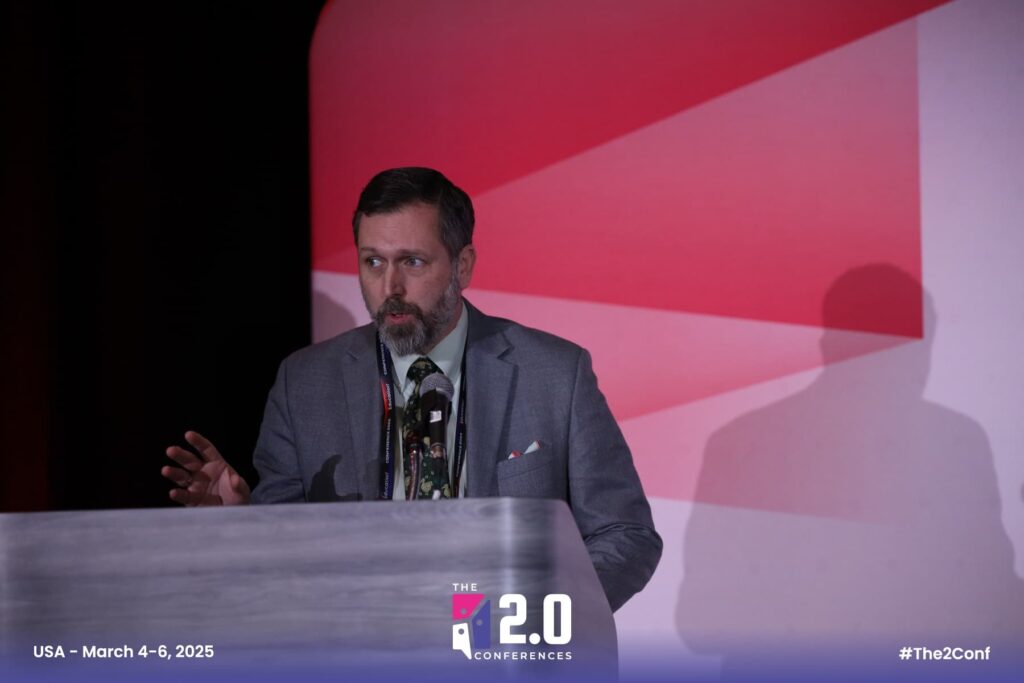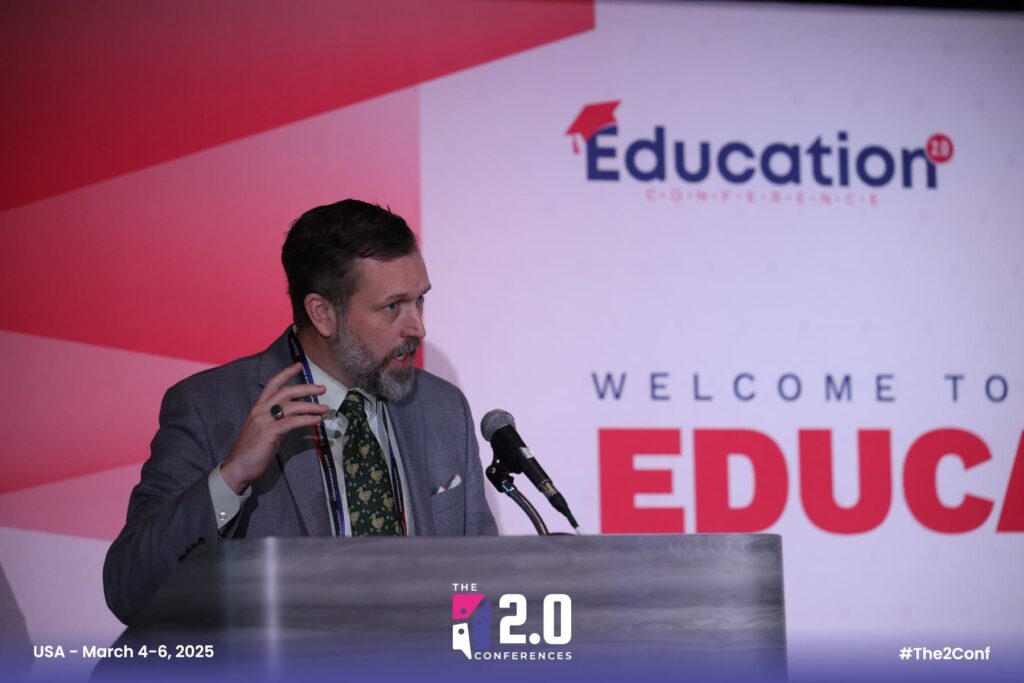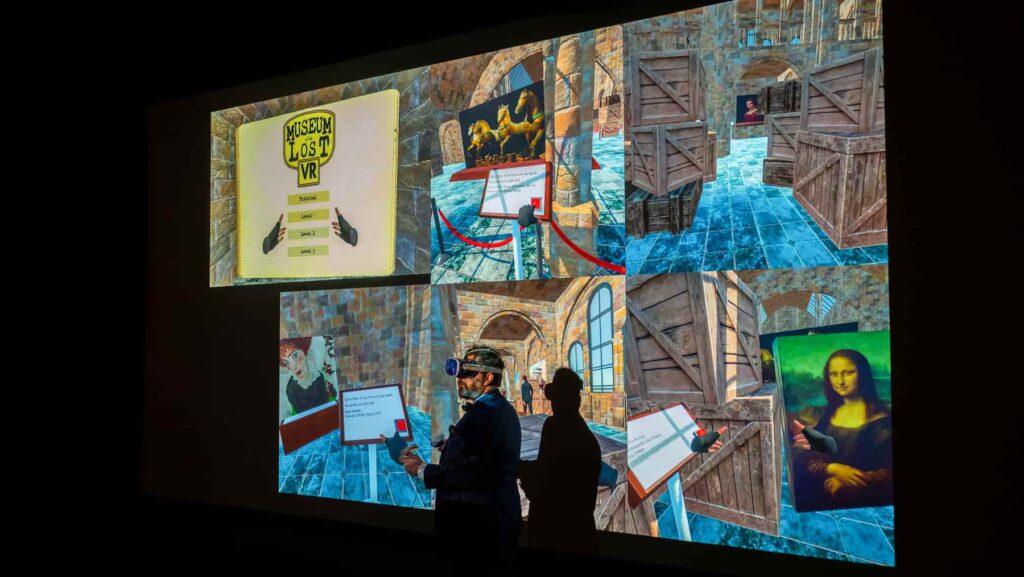James Hutson: Guiding AI Towards a More Human Future
Visionary AI Leader of the Year, 2025

In a world increasingly shaped by algorithms, automation, and artificial intelligence, few leaders are as uniquely equipped—or as deeply human—as James Hutson. We, at The EliteX, are proud to have James Hutson as the Visionary AI Leader of the Year, 2025.
A multidisciplinary educator and researcher, Hutson stands at the crossroads of technology and humanity, wielding not just technical knowledge but a profound sense of ethics, empathy, and imagination.
From classrooms to XR labs, from art history to AI policy, his work defies convention and calls for a future where innovation is not measured by speed or scale, but by inclusivity, cultural relevance, and societal well-being. In this special feature, we explore James Hutson’s extraordinary journey, the philosophy behind his mission, and the groundbreaking work that earned him this prestigious recognition.
A Unique Path to the Heart of AI
Meet James Hutson. He’s a researcher and educator who thrives at the crossroads of artificial intelligence, neuroscience, business innovation, and the future of how we learn and work. Unlike many in the AI field, James didn’t start with lines of code. His journey into AI began from a fascination with how we think, create, and make sense of the world, stemming from his background as an art historian.
“My entry into the world of AI emerged not through engineering, but through inquiry into cognition, creativity, and systems of meaning,” James explains. He was captivated by how machine learning could understand, recreate, and even boost cultural knowledge. This led him to see AI not just as a tool for automation, but as a partner in reimagining education, making things more accessible, and creating new knowledge. His work, spanning digital archives, immersive art installations, and smart teaching systems, solidified his belief in designing AI that puts people first.
James’s broad expertise comes from working with over 100 researchers worldwide and strong support from Lindenwood University. He’s skilled in AI, art history, neuroscience, immersive learning, and even game design. His main goal? To build AI systems that truly help people learn better, support different ways of thinking, and prepare everyone—individuals and organizations—for a world that’s always changing. Whether he’s building smart tutors, helping shape ethical AI rules, or developing tools for the modern workplace, James sees technology as a way to create a more welcoming, imaginative, and flexible future for everyone.

The Human at the Core: A Guiding Mission
At the heart of all James Hutson’s work is a clear and powerful mission: to make sure that the AI revolution benefits everyone. He believes that AI shouldn’t be hidden away in the back office or just for tech experts. Instead, it should be woven into our culture, education, and public services so that its benefits reach all people equally.
This mission drives him to create amazing things like generative media systems for learners with diverse needs, AI-powered platforms for public involvement, and immersive digital tools to teach about global heritage. At Lindenwood University, James leads the AI Research Center’s five-year plan. This plan connects job training with ethical and smart AI literacy for students of all ages, from kindergarten to college, and even for professionals learning new skills. “Every initiative is guided by one premise: AI must serve humanity, not the other way around,” James states, emphasizing his core belief.
Shaping Minds: A Proud Achievement
When asked about his biggest achievement so far, James points to the development and leadership of the Human-Centered AI program within the College of Arts and Humanities at Lindenwood University. This isn’t just about teaching how to use AI tools; it’s about changing how people think.
“We’re training the next generation to approach AI with curiosity, ethical awareness, and a growth mindset that prepares them for dynamic futures across industries,” James says with pride. This program works hand-in-hand with the mission of their AI Research Center, which focuses on encouraging responsible innovation, preparing people for jobs, and promoting lifelong learning. Seeing students, many of whom don’t have a technical background, gain confidence in understanding and shaping the AI world has been incredibly rewarding for him. It proves that becoming skilled in AI doesn’t just come from coding; it can also grow from critical thinking, creativity, and a dedication to human values.

Overcoming Obstacles: A New Kind of Pencil
The path to integrating AI into traditional education wasn’t without its bumps. James recalls “institutional inertia” as the biggest hurdle. This means getting old-fashioned education systems to accept AI tools not as threats, but as ways to help students think better and grow. There was a lot of doubt from teachers, accreditation groups, and administrators at first.
James tackled this by creating step-by-step AI literacy programs and free-to-use toolkits. These tools clearly showed how much students improved in writing, critical thinking, and understanding civic matters. By focusing on being open, fair use of data, and intellectual ownership, he changed how people saw AI. It wasn’t a “cheat code,” but a “new kind of pencil—powerful, versatile, and user-guided.” This smart approach helped overcome the initial resistance and paved the way for more widespread acceptance.
Ethics: The Backbone of AI
For James Hutson, ethics isn’t just an add-on to AI; it’s its very foundation. He believes that every algorithm makes decisions about data, values, and how things are shown, and therefore must be held to the highest standards of fairness, openness, and justice.
His work builds ethical considerations right into the design process, from choosing training data that avoids bias to creating models that can be explained and give users control. In their Human-Centered AI courses, students learn not just the technical skills but also frameworks for good behavior, how to hold algorithms accountable, and the idea of digital variety. For James, responsible AI is as much about teaching as it is about programming.
Building Bridges: Inclusive and Socially Responsible AI
Ensuring AI projects are inclusive and socially responsible is a core principle for James. He explains that inclusivity is built into their projects right from the start. His XR (extended reality) and AI labs work closely with neurodivergent users, veterans, and groups that are often overlooked to make sure their creations are accessible and culturally relevant.
Working with Université Laval, they expanded this vision globally. They developed XR-based job training tools for individuals with autism that simulate work environments and social interactions. They also created AI-assisted singing therapy for people with Alzheimer’s, using generated voices to help with memory recall and emotional connection. Furthermore, they train K-12 teachers and community leaders to be AI partners, not just users. This creates a loop where local needs and knowledge are considered. This “participatory ethic” is central to every new idea and policy they promote.
The Thrill of Decentralized AI

When it comes to emerging AI trends, James is most excited about “edge-deployed synthetic media and LLMs (large language models) embedded in wearable and offline environments.” This means AI is moving away from just cloud-based systems to devices that can be used in museums, classrooms, and even smart fabrics. This decentralization allows for AI applications that are specific to a situation, work in real-time, and are guided by humans.
James is currently looking into AI-driven biosensory interfaces that help with emotional regulation and feedback in therapies that combine neuroscience and aesthetics. He’s also exploring avatar-based conversational agents for telling stories across generations. These developments open up possibilities for AI systems that understand our bodies, emotions, and surroundings, completely changing how we interact with technology.
Debunking the Creativity Myth
One of the most common myths about AI that James Hutson wants to clear up is the idea that AI will destroy creativity or originality. He firmly believes the opposite. “In truth, well-designed generative systems can extend human inventiveness by offering new juxtapositions, analogies, and constraints,” he explains. When AI is treated as a partner, not a replacement, it can actually encourage new ways of thinking.
He gives an example from their game design courses, where students use AI to quickly create story ideas and visual themes. However, the students are still the ones who choose, combine, and reshape the AI’s output into truly expressive and original works. For James, creativity isn’t threatened by AI; it’s simply given a new context and expanded.
A Compass of Curiosity: Staying Ahead
In a field that moves as fast as AI, staying inspired and innovative is crucial. James Hutson’s secret?
“Curiosity is my compass.”
He makes sure to stay in constant conversation with students, artists, developers, and policymakers, always keeping an ear out for unexpected connections.
He reads widely, from cognitive science to futuristic stories, and often tries out new ideas through collaborative “sandboxes”—many of which involve different fields. His lab regularly hosts “hackathons,” where faculty, students, and the community work together to create imaginative AI systems that address global challenges, from climate change to the loss of cultural heritage. James believes that innovation thrives when ideas mix and mingle, not when they are kept in isolated groups.
Influences: From Thinkers to Family
When reflecting on who has influenced his AI journey, James mentions Genevieve Bell’s work on ethnographic AI and Shoshana Zuboff’s critique of surveillance capitalism, which helped shape his early ideas. However, his deepest influence came from a much more personal source: his neurodivergent son.
“Watching how he navigated digital and embodied spaces illuminated how narrow our default assumptions are about cognition, literacy, and expression,” James shares. His son taught him a profound lesson: AI systems must adapt to users, not the other way around. Much of James’s current work in accessible design and learning systems tailored for different minds owes its core belief to this powerful realization. This personal insight has fueled his dedication to building AI that truly understands and supports the diverse ways humans interact with the world.
Industries on the Cusp of Transformation
According to James Hutson, education is set to undergo the most radical transformation, not just in how it’s delivered but in the very nature of what learning means. As AI becomes a cognitive partner, learning will shift from simply finding information to actively creating knowledge through inquiry and adaptation.
Healthcare will also see major growth through early diagnosis, empathetic virtual assistants, and assistive brain technologies. And the creative industries—especially film, design, and publishing—will become places where AI and humans work together to create new artistic languages. James emphasizes that these sectors need to be re-equipped not just with new technology, but with a strong ethical foundation.

AI’s Evolution: Ambient and Accountable
Looking ahead five years, James sees AI becoming ambient. What he means by this is that AI will be integrated into every part of daily life, from city services and healthcare to personalized education and efforts to deal with climate change. The main challenge, he believes, will be governance: making sure these systems increase fairness and accessibility instead of repeating existing inequalities.
He expects big leaps in personalized smart tutors, AI tools for public discussions, and global efforts to protect endangered and indigenous knowledge through automated preservation systems. These changes will demand not just technical know-how but also foresight in terms of philosophy and values.
A Vision for AI and Humanity: Dignity, Imagination, Interconnectedness
James Hutson’s ultimate vision for the future of AI and humanity is profound and inspiring. He envisions a world where AI enhances—not replaces—human dignity, imagination, and our connections with each other. He sees AI as a powerful force for fairness: helping to bring back lost languages, expanding access to education, designing inclusive environments, and supporting well-being for all types of minds and across all geographies.
This vision requires rethinking both our tools and our institutions—building AI infrastructures that are rooted in care, transparency, and cultural sustainability. “If designed wisely, AI can help humanity remember what matters: not efficiency, but empathy; not scale, but significance,” he concludes. For James Hutson, we are not just building artificial minds; we are shaping a mirror through which humanity can see itself anew, with greater understanding and purpose. His work is a testament to the idea that with thoughtful guidance, AI can truly elevate the human experience.
Advice for the Next Generation: Be Hybrid Thinkers
For the next generation of AI leaders, James Hutson offers valuable advice that goes beyond just technical skills. He encourages them to build fluency not just in models and code, but in culture, ethics, and systems thinking. He stresses the importance of understanding how values are built into design and questioning whose data is used and whose voices are missing.“Be as comfortable reading poetry as parsing Python,” he advises, highlighting the need for a broad perspective. He firmly believes that the future of AI won’t be led by technologists alone. Instead, it will be shaped by “hybrid thinkers” who can cross different fields and understand many ways of knowing. Above all, he urges them to remain focused on serving humanity.
